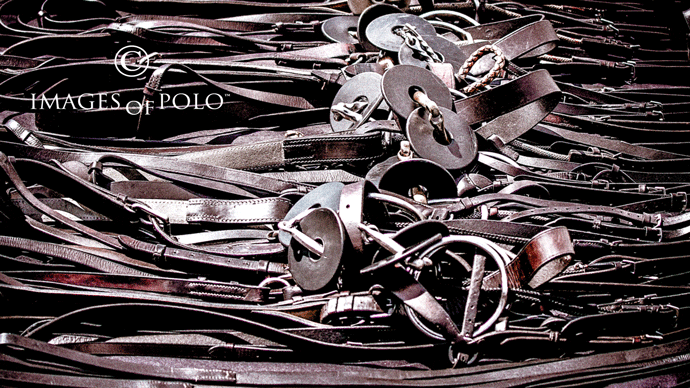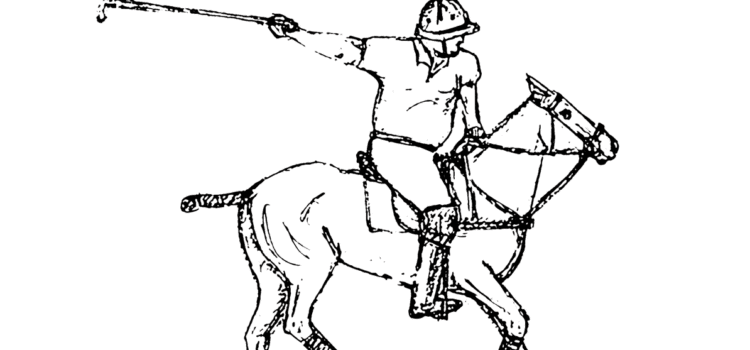As other equestrian disciplines get tougher on rider-to-horse weight ratios, where does polo stand on the 20 per cent rule?
Words: Aurora Eastwood
Illustration: Bryony Barraclough
Tales of mismatched riders being ordered off horses at shows in the UK have made juicy headlines recently, and there have been reports from Germany of riders being barred from show-jumping events on welfare grounds. Even the Horse of the Year Show let it be known that stewards would be gunning for ‘overweight’ riders too.
Debate over rider-to-horse weight ratios has been ongoing for years, but if latest received wisdom is correct – that a rider should be no more than 20 per cent of the weight of their mount – polo may have awkward questions to answer if the media spotlight lingers.
We’ve seen estimates that as many as two thirds of riders are too heavy for their horses, exceeding the commonly quoted guidelines that 10 per cent of the horse’s weight is ideal, 15 per cent OK, and 20 per cent the upper welfare limit.
So what might this mean for polo, if a groundswell of public opinion leads to guidelines becoming enforced in other equine disciplines? Will clubs need weighbridges for horses, and weighing rooms for players? Will we all have to play polo on cobs? Joking apart, it’s not too hard to imagine the issue generating such a head of steam, that it creates genuine problems right across the polo industry.
Aside from adults riding ponies in showing classes, polo is probably the sport that is sailing closest to the wind on this. Personal fitness isn’t always taken very seriously,
and many think nothing of their own weight when jumping on a 15hh polo pony. Adding to the problem is saddlery and kit that has changed little in design for decades on the basis ‘it needs to be tough for polo’, irrespective of materials advances in other sports.

How much should a polo pony be expected to carry?
How detrimental is it to exceed 20 per cent?
Vets vary in opinion. “I’m not sure how much of a problem this is,” says Richard Vile, a highly-experienced Hampshire vet. “Do I see more injuries in horses ridden by people who are overweight? Not really. It’s more about how well you ride and how well your saddle fits. Poorly fitting tack will compound the problem. Polo ponies are certainly on the sharp end of this issue as they aren’t very big, the saddles aren’t great and they can be ridden by big people who aren’t always the best riders.”
A previous president of the BEVA (British Equine Veterinary Association) thinks the maximum figure should be lower, at 15 per cent. He also points out it is often the pairing that is the problem, not being overweight per se. “Often the problem is not an overweight rider, but a rider on too small a horse.”
The truth is, though, nobody really knows. BEVA is supposed to be investigating the problem, but appears to be waiting on a report from the Animal Health Trust. Sam Dyson at the Trust told PQ there’s no timescale to start the investigation they want, because there’s no funding.
What is the response from polo?
Aside from welfare, a horse carrying less weight can travel faster and turn more quickly – which is of course why racehorse trainers want their jockeys to be as light as possible.
The few players we quizzed hadn’t heard of a 20 per cent guideline, and were mostly surprised at how much their tack and kit could weigh. Perhaps unsurprisingly, few seemed inclined to do anything about it.

Traditional polo tack is weighty
George Meyrick is one player who takes weight very seriously, using lighter plastic stirrups, pared-back bridles, no breastplates and lightweight saddles, and who also controls his own weight. “I want the ponies to be comfortable and to perform well, so obviously the less weight they have to carry the better they will go,” he says.
Chairman of the HPA welfare committee, David Morley, illustrates the problem of arbitrary percentages, pointing out how horsemanship plays a huge part. “A lot has to be said for how you ride, and the type and conformation of horse is obviously vital. A spindly thoroughbred, no matter how fat you get it, can’t carry the same weight as a solid, part-bred pony with good conformation. The ratios for those two types won’t be the same.”

George Meyrick keeps on top of the issue
So what happens next?
The HPA says it’s keeping tabs on the situation as you’d expect, but we get the sense that polo in general hopes this is an issue that will quietly disappear. Perhaps it will. In the meantime, it never hurts to try and to lose a few kilos!
Rider weights – the old rules of thumb:
⅙ for a hunter (16.6 per cent)
⅕ for a cavalry charger (20 per cent)
¼ for a quiet hack (25 per cent)
⅓ for a tough native pony (33.3 per cent)
Number crunching:
The bottom line is that you don’t need to be overweight to be exceed the 20 per cent ratio – as our table shows, an average player may already over the limit:
Average 15.2hh polo pony weight: 450kgs
Average weight of tack, boots, hat and mallet: 21kgs
Average male rider weight: 79kgs
Average female rider weight: 70kgs
Male rider to pony weight ratio: 22 per cent
Female rider to pony weight ratio: 20 per cent
